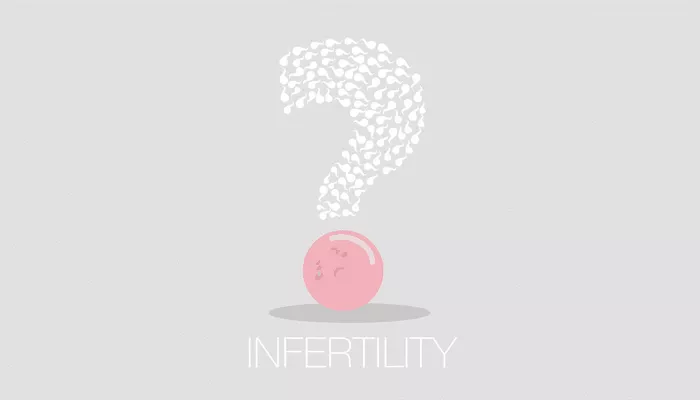Leiomyoma of the uterus, commonly known as uterine fibroids, is a widespread condition affecting many women of reproductive age. These are noncancerous growths that develop in or around the uterus. While they are generally benign, they can lead to various symptoms, including heavy menstrual bleeding, pelvic pain, and reproductive complications.
Understanding what causes leiomyoma is crucial for early detection and management. While the exact cause is not entirely known, several factors contribute to the development of these tumors. Hormonal influences, genetic factors, and environmental conditions all play a role.
This article explores the potential causes of uterine leiomyoma, focusing on how different biological and lifestyle factors influence their growth.
What Is a Leiomyoma?
A leiomyoma is a benign tumor that originates from the smooth muscle cells of the uterus. These tumors can develop in different locations within the uterus, leading to various symptoms and complications.
Types of Uterine Leiomyomas
Leiomyomas can be classified based on their location in the uterus:
1. Intramural Fibroids – These develop within the muscular wall of the uterus and are the most common type. They can cause pelvic pain and heavy periods.
2. Subserosal Fibroids – These grow on the outer surface of the uterus and may exert pressure on surrounding organs. They can lead to bloating or frequent urination.
3. Submucosal Fibroids – These develop just under the lining of the uterus and can cause severe menstrual bleeding and fertility problems.
4. Pedunculated Fibroids – These are attached to the uterus by a thin stalk and may cause pain if they twist or grow too large.
Regardless of their type, fibroids can vary in size and number. Some women may have a single fibroid, while others may develop multiple tumors that can grow to significant sizes.
Hormonal Influence on Leiomyoma Growth
The Role of Estrogen and Progesterone
Hormones are one of the most significant factors in the growth of leiomyomas. Estrogen and progesterone, two key reproductive hormones, play a major role in stimulating fibroid development.
- Estrogen promotes the growth of uterine tissues. High estrogen levels, particularly during pregnancy or hormonal therapy, can lead to fibroid enlargement.
- Progesterone works alongside estrogen to regulate the menstrual cycle. It also supports fibroid growth by promoting cell division in the uterine muscle.
Women with higher levels of these hormones are more likely to develop fibroids. This explains why fibroids tend to shrink after menopause when hormone levels naturally decline.
Hormonal Imbalances and Fibroid Development
An imbalance in estrogen and progesterone can increase the risk of fibroid growth. Conditions such as polycystic ovary syndrome (PCOS), obesity, and hormone therapy can lead to excessive estrogen levels, which may contribute to fibroid formation.
Genetic Factors in Uterine Leiomyomas
Family History and Genetic Risk
Genetics also plays a role in fibroid development. Women with a family history of fibroids are more likely to develop them. If a mother or sister has fibroids, the likelihood of developing them increases significantly.
Research suggests that specific genetic mutations in uterine muscle cells may lead to abnormal growth patterns, resulting in fibroid formation. These genetic changes can make some women more susceptible to developing fibroids than others.
Inflammation and the Development of Fibroids
Chronic Inflammation and Fibroid Growth
Inflammation is another factor that can contribute to the development of leiomyomas. Chronic inflammation in the pelvic region may stimulate the abnormal growth of uterine tissue.
Certain inflammatory markers, such as cytokines, have been linked to fibroid development. These inflammatory substances can trigger excessive cell growth and increase the chances of fibroid formation.
Impact of Immune System Response
The immune system plays a crucial role in maintaining tissue health. An impaired immune response may lead to uncontrolled cell growth, increasing the risk of fibroid formation.
Environmental and Lifestyle Factors
Obesity and Fibroid Growth
Obesity is a significant risk factor for uterine fibroids. Fat cells produce estrogen, and excessive fat tissue can lead to increased estrogen levels, promoting fibroid growth.
Women with a higher body mass index (BMI) are more likely to develop fibroids, and their fibroids tend to grow larger than those in women with a lower BMI.
Diet and Nutrition’s Role
Diet plays a crucial role in fibroid development. A diet high in processed foods, red meat, and sugar can increase inflammation and hormone imbalance, contributing to fibroid growth.
On the other hand, a diet rich in fruits, vegetables, and fiber may help regulate hormone levels and reduce the risk of developing fibroids.
Exposure to Endocrine Disruptors
Endocrine-disrupting chemicals (EDCs) found in plastics, cosmetics, and processed foods can interfere with hormone regulation. These chemicals mimic estrogen and may increase the risk of fibroid development.
Reducing exposure to these harmful chemicals by avoiding processed foods and using natural personal care products may help lower the risk of fibroids.
The Impact of Age and Reproductive History
Age and Fibroid Development
Fibroids are most common in women between the ages of 30 and 50. Younger women may develop fibroids, but they tend to grow larger and become more symptomatic as women approach their late reproductive years.
Pregnancy and Childbirth
Pregnancy affects fibroid growth in different ways. Some fibroids grow larger due to increased estrogen levels during pregnancy, while others shrink after childbirth. Women who have had multiple pregnancies may have a lower risk of developing fibroids compared to those who have never been pregnant.
Other Medical Conditions and Their Influence
High Blood Pressure and Fibroid Growth
Studies suggest that high blood pressure (hypertension) may be linked to an increased risk of fibroids. The exact connection is unclear, but it may involve changes in blood flow and tissue growth in the uterus.
Diabetes and Insulin Resistance
Insulin resistance, commonly seen in diabetes, can lead to higher estrogen levels, increasing the risk of fibroids. Women with metabolic disorders may be at a greater risk of developing large or multiple fibroids.
Conclusion
Leiomyoma of the uterus, or fibroids, is a common condition influenced by multiple factors. While the exact cause is not entirely known, hormones, genetics, inflammation, and lifestyle choices all contribute to their development.
Understanding the risk factors can help women take preventive measures, such as maintaining a healthy diet, managing hormone levels, and reducing exposure to environmental toxins.
Although fibroids are usually benign, they can cause significant discomfort and complications. Women experiencing symptoms should seek medical advice to explore treatment options, including medications, hormonal therapy, or surgical intervention.
By addressing these risk factors and staying informed, women can take proactive steps to manage their reproductive health and reduce the impact of uterine fibroids.
Related topics:
Is Endometriosis Related to Heavy Periods?

























